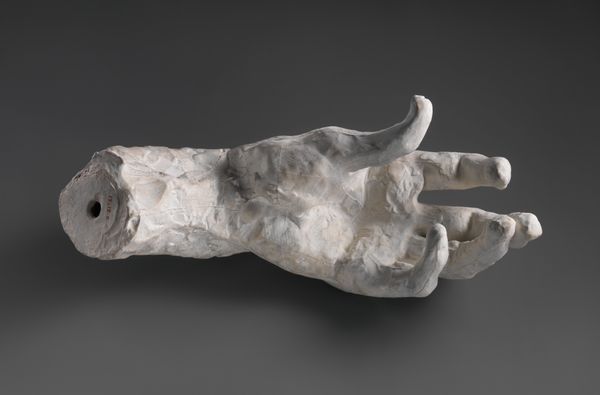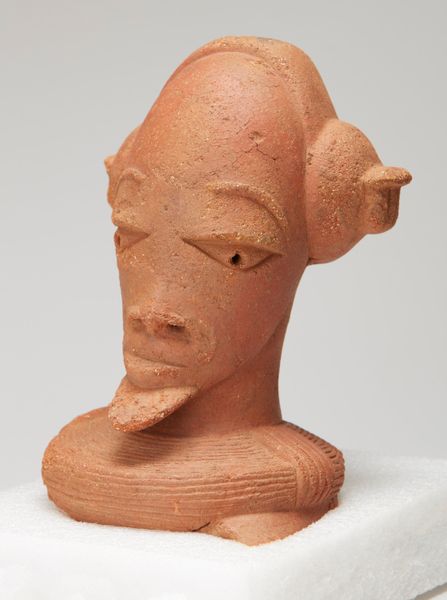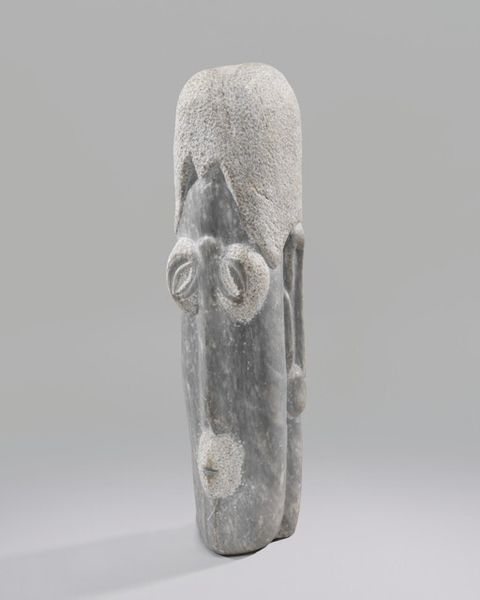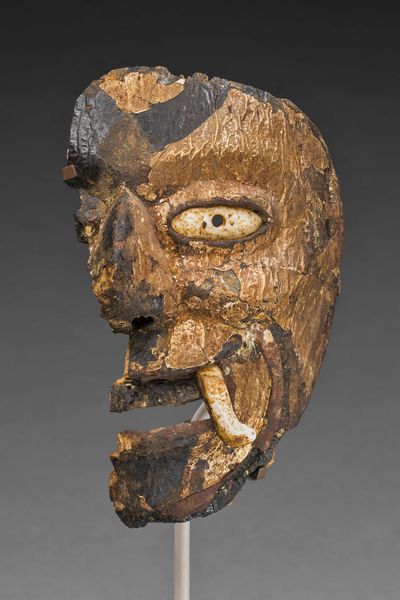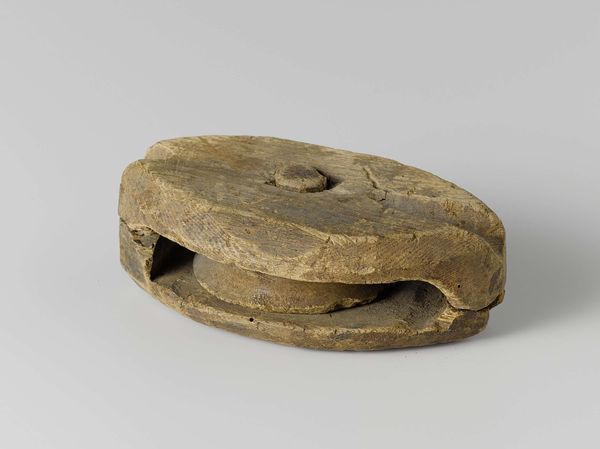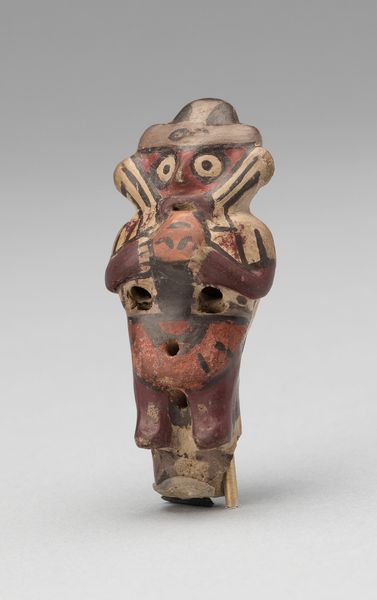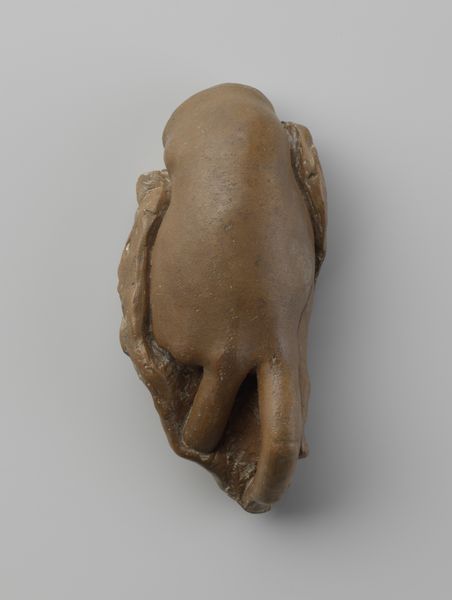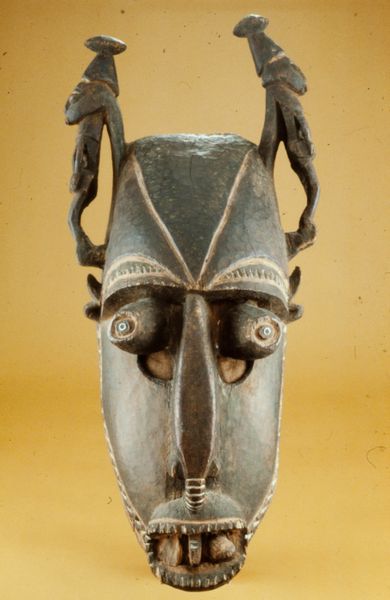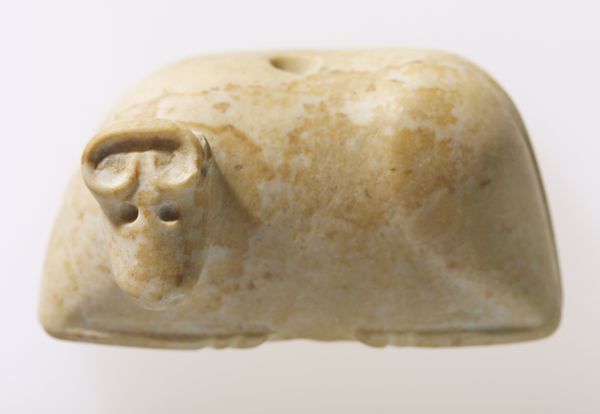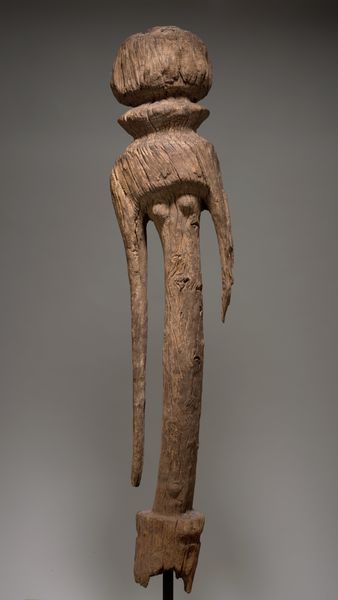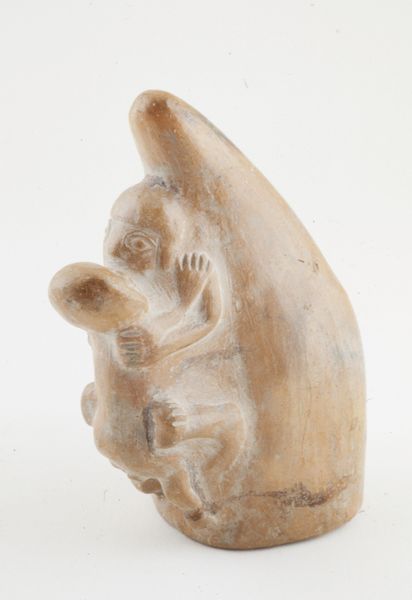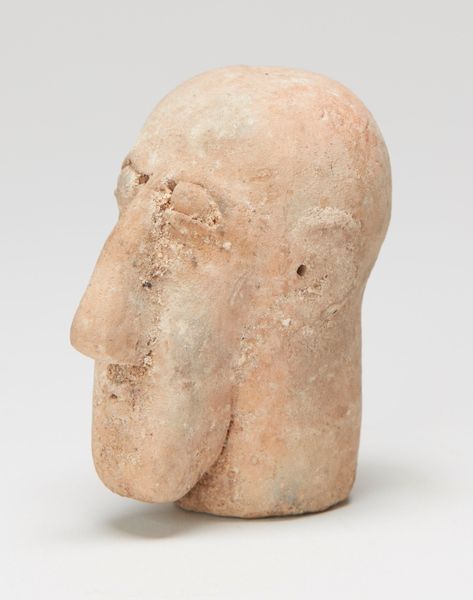
ceramic, earthenware, sculpture
#
head
#
sculpture
#
ceramic
#
sculptural image
#
figuration
#
earthenware
#
ancient-mediterranean
#
sculpture
Dimensions: 3 1/2 x 7 1/4 x 3 in. (8.89 x 18.42 x 7.62 cm)
Copyright: Public Domain
Curator: Standing before us is an earthenware sculpture, simply titled "Head," believed to originate from around the 8th century. It currently resides here at the Minneapolis Institute of Art. Editor: There's a quiet solemnity to it, isn’t there? The closed eyes, the slight downward curve of the mouth. It speaks of inner peace, or perhaps even mourning. Curator: Considering its historical context, we need to understand what roles figurative ceramics were playing. Earthenware objects, especially heads or faces, held different purposes in varied cultures: as ancestor portraits, votive offerings, or architectural ornaments with symbolic functions. This was made at a time of heightened societal complexity. Editor: The details above the eyes are what draw me in. It appears to be a row of dots. The closed eyes could reference sleep, meditation, or death and perhaps imply an interaction with other worlds or planes. This detail creates a sense of mystery around its intended significance. What about the partial loss of features such as its missing nose or part of its head on top. Does it hint at mortality? Curator: Exactly! The broken features also alter its accessibility. Has its loss amplified certain narratives of death for later generations. Or it’s use as some kind of historical artefact. Editor: Absolutely. And think about the material. The earthy nature of the earthenware links the sculpture back to the earth, a source of both life and death. The creator wanted people to see it a particular way. Curator: Yes, its presence here in the museum speaks to the cultural and aesthetic values of different eras – the initial society which created it, of course, but also the evolving tastes and historical understandings of later societies who encountered it and brought it here for the enjoyment of future audiences. The museum displays an effort to understand the cultural values through object displays. Editor: And the act of preserving this "Head" helps ensure cultural memory and continuity, a powerful visual symbol that maintains symbolic value to audiences even centuries later. Curator: Ultimately, the sculpture serves as a physical conduit between then and now, challenging contemporary views. Editor: It gives us something to grapple with as we explore meanings both intentionally given and received by its viewers.
Comments
No comments
Be the first to comment and join the conversation on the ultimate creative platform.
